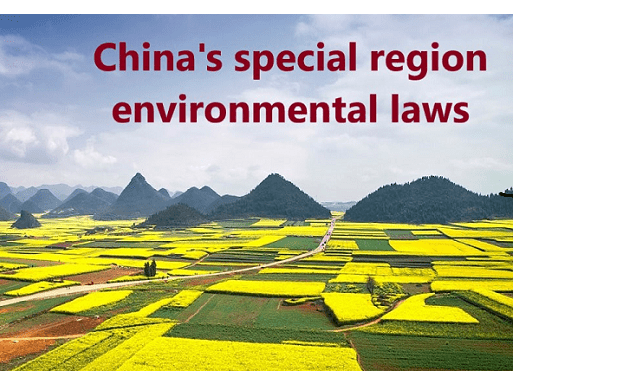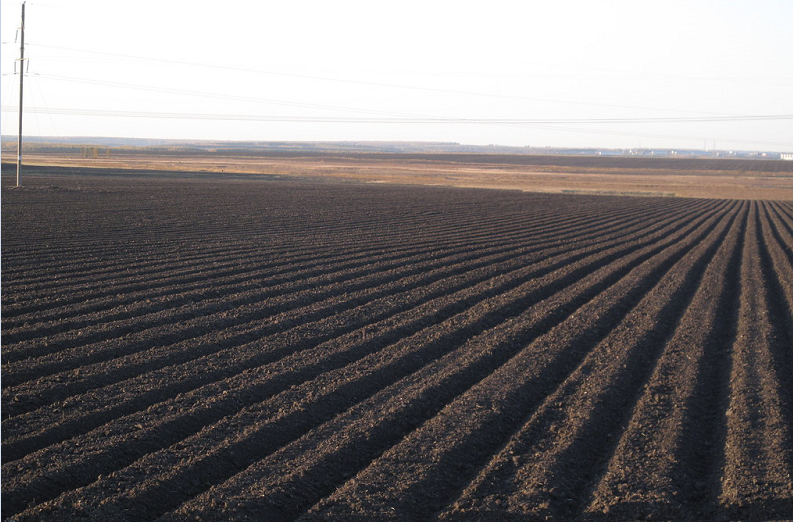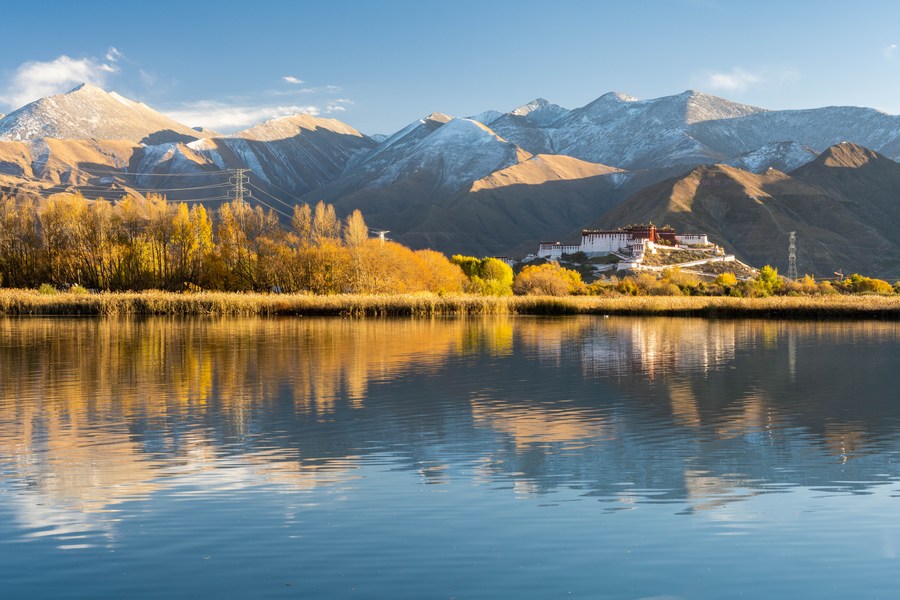
Laws for the ecological protection of special regions
In late April 2023 China’s top legislature adopted a law to protect the fragile ecosystem of the Qinghai-Tibet Plateau.
This is the latest of China’s environmental laws for 4 key ecological regions. The first of be enacted was the Yangtze River Protection Law, followed by the Yellow River Protection Law, the Black Soil Land Conservation Law, and now the Qinghai–Tibet Plateau Ecological Conservation Law.
The passing of the latter law completes China’s 1+N+4 environmental law system. This consists of:
- (1) the comprehensive Environmental Protection Law;
- (N) a set of special laws covering different environmental fields such as air and water pollution control; and
- (4) four specific protection laws for 4 key ecological regions (the Yangtze River, the Yellow River, Black Soil Land, and the Qinghai–Tibet Plateau).
Below we provide a brief outline of the purpose and scope of China’s environmental laws for the four key ecological regions.
Yangtze River Protection Law
The full text of the law is available here (English): http://www.npc.gov.cn/englishnpc/c23934/202103/8cccd3c25caf464d8ae3aedc66a21dd0.shtml
The law took effect on March 1, 2021, and is China’s first legislation on a specific river basin. The Yangtze River is regarded as China’s “mother river”. The Yangtze and Yellow Rivers are considered as “cradles of Chinese civilisation” and both rivers have played significant roles in China’s history, demonstrating their cultural and historical value to China and Chinese people.
The law is formulated to strengthen the protection and restoration of the ecological environment in the Yangtze River basin, facilitate the effective and rational use of resources, safeguard ecological security, ensure harmony between human and nature, and achieve the sustainable development of the Chinese nation.
The law requires a range of management actions, including establishment of a Yangtze River Basin Coordination Mechanism, expert advisory committee and other processes to uniformly guide and coordinate the protection of the Yangtze River, provide deliberate on major policies and plans for the protection of the Yangtze River, coordinate cross-regional and inter-departmental major matters, and supervise and inspect the implementation of important work on the protection of the Yangtze River.
The law stipulates that ecology shall be prioritized and green development shall be adhered to for the economic and social development of the Yangtze River Basin and no large-scale development shall be undertaken.

The law also makes provisions for preparation of development and spatial plans for the Yangtze River Basin, the implementation of a management system for control over total water abstraction and use, the system for the total discharge control indicators for key pollutants in each provincial administrative area, as well as biodiversity surveys and ecological and environmental zoning and control plans at provincial level and disaster management.
The law consists of 11 Chapters: General Provisions (I); Plans and Control (II); Resource Protection (III); Prevention and Control of Water Pollution (IV); Ecological and Environmental Remediation (V); Green Development (VI); Guarantee and Supervision (VII); Legal Liability (VIII); Supplemental Provisions (IX).
Yellow River Protection Law
The law took effect on April 1, 2023 and applies to the Yellow River basin. The Yerllow River is China’s second longest river and considered one of the “cradles of Chinese civilisation”.
The full text of the law is available here (Chinese): https://npcobserver.com/legislation/yellow-river-protection-law/
The purposes of the law are the strengthening the protection of the ecology and environment of the Yellow River basin, guaranteeing the safety of the Yellow River, promoting the conservation and intensive utilization of water resources, driving high-quality development, and protecting the Yellow River culture.
The law prohibits mining, sand mining, fishing and hunting activities in the upper reaches of the Yellow River. The law bans new projects as well as the expansion of projects of chemical industrial parks and chemical production in specified areas along the mainstream and tributaries of the Yellow River.

The law makes holistic institutional arrangements for the protection and management of the Yellow River, seeking to reduce groundwater abstraction in the basin. It promotes comprehensive upstream and downstream management, including source control. Water conservation areas, as the focus of protection, should strengthen the protection of snow mountain glaciers, plateau permafrost, alpine meadows, grasslands, wetlands, etc; for the water and soil erosion control in the Yellow River Basin. In particular, it is required to follow the principles of unified planning and management to formulate comprehensive plans for the Yellow River Basin, water resources plans, and flood control plans and to make arrangements for conservation, protection, development, and utilization of water resources and prevention and control of water disasters.
The law requires China to implement a rigid water resource constraint system in the Yellow River Basin from the legal level. It clearly requires optimizing the development and protection pattern of land space, promoting the scientific and rational distribution of population and cities, and building a modern industrial system that is compatible with the carrying capacity of water resources. It also stipulates requirements for flood control and disaster reduction engineering systems in the basin, and the improvement of water and sediment control systems.
The law consists of 11 Chapters: I. General Provisions; II. Planning and Control; III. Ecological Protection and Restoration; IV Conservation and Intensive Utilization of Water Resources; V. Water and Sediment Control and Flood Control Safety; VI Pollution Prevention and Control; VII Promoting High-Quality Development; VIII. Protection, Inheritance, and Promotion of the Yellow River Culture; IX. Guarantee and Supervision; X. Legal Liability; XI. Supplemental Provisions.
Black Soil Land Conservation Law
The full text of the law is available here (English): http://en.npc.gov.cn.cdurl.cn/2023-06/01/c_891547.htm
The law took effect on 1 August 2022 and applies to cultivated highly fertile black soil, or chernozem soil, with good characteristics which contains black or dark black humus topsoil within the relevant areas in China’s northeastern provinces of Heilongjiang, Jilin and Liaoning and in some parts of the Inner Mongolia Autonomous Region.
This law is for the purposes of protecting black soil resources, steadily restoring and improving the basic fertility of black soil, promoting sustainable utilization of resources, maintaining ecological balance, and safeguarding national food security. Black soils produce about a quarter of the country’s total grain output, making it crucial to China’s food supply.
The law requires that black soil be used in growing farm produce, mainly for food production, including grains, oil crops, sugar crops, and vegetables. Strict protection must be provided for black soil that has been designated as part of the country’s “permanent basic farmland” to ensure stable grain yields and quality.

The law requires that governments at or above the county level should earmark funds for black soil protection in their budgets and report their work on black soil protection to people’s congresses of the corresponding level.
The law further makes provisions, inter alia, for: investigation and monitoring of black soil resources, scientific and technological support, quantitative protection measures, and quality improvement measures, offences and penalties. It stipulates harsher punishment for those who cause pollution or soil erosion in black soil area, and asks state farms to contribute more to black soil protection efforts.
The law specifies the responsibilities of the government and “agricultural production operators” to protect the black soil.
The law consists of 38 articles.
Qinghai–Tibet Plateau Ecological Conservation Law
The full text of the law is available here (Chinese): https://npcobserver.com/legislation/qinghai-tibet-plateau-ecological-conservation-law/
The law will take effect on 1 September 2023. It applies to all administrative regions of the Tibet Autonomous Region and Qinghai Province and the specified county-level administrative regions of the Xinjiang Uygur Autonomous Region, Sichuan Province, Gansu Province and Yunnan Province.
The law is for the purpose is to strengthen the ecological protection of the Qinghai-Tibet Plateau, prevent and control ecological risks, ensure ecological security, build a national ecological civilization highland, promote sustainable economic and social development, and realize harmonious coexistence between man and nature.
The law prohibits production and construction activities that may cause soil erosion in areas that already suffer severe soil erosion or have fragile ecology. It bans sand mining and mining activities that do not meet conservation requirements in nature reserves for river sources and imposes strict rules against the construction of new small hydropower stations on the plateau. The law also contains provisions for travelers. It prescribes penalties for those who litter on the plateau.

Under the law national parks, nature reserves, natural parks and other nature reserves will be established to ensure representation of important typical ecosystems of the Qinghai-Tibet Plateau, ecologically sensitive areas, and areas where precious and endangered or endemic wild animals and plants are naturally concentrated, important habitats, important natural relics and important natural landscape distribution areas, and promote the construction of natural reserves such as Sanjiangyuan, Qilian Mountain, Qiantang, Mount Everest, Gaoligong Mountain and Gongga Mountain.
The law consists of 7 Chapters: 1 Chapter I General Provisions 2 Chapter II Ecological Security Layout 3 Chapter III Ecological Protection and Restoration 4 Chapter Four Ecological Risk Prevention and Control 5 Chapter V Guarantee and Supervision 6 Chapter VI Legal Responsibilities 7 Chapter VII Supplementary Provisions.
Sources: NPC Observer – Covering China’s National People’s Congress and its Standing Committee
http://www.npc.gov.cn/englishnpc/c23934/202103/8cccd3c25caf464d8ae3aedc66a21dd0.shtml
https://npcobserver.com/legislation/yellow-river-protection-law/
http://en.npc.gov.cn.cdurl.cn/2023-06/01/c_891547.htm
https://npcobserver.com/legislation/qinghai-tibet-plateau-ecological-conservation-law/